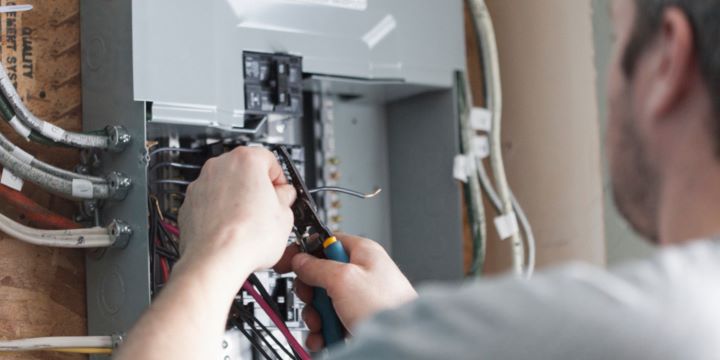Introduction
In the dynamic landscape of modern living, homes increasingly rely on electrical systems to power a multitude of devices and appliances. As technology advances and household needs evolve, it becomes essential to consider electrical upgrades for your home. This comprehensive guide will explore the importance of electrical upgrades, common signs that your home needs them, and the various upgrades available to enhance safety, efficiency, and overall functionality.
The Importance of Electrical Upgrades
The electrical system is the backbone of any home, responsible for delivering power to lights, appliances, and electronic devices. Upgrading your electrical system is not only a matter of convenience but also a crucial step in ensuring the safety and efficiency of your home. Aging or inadequate electrical systems can pose serious risks, including electrical fires and electrocution. Additionally, modernizing your electrical infrastructure allows for the integration of smart technologies and energy-efficient solutions, contributing to a more sustainable and cost-effective household.
Signs Your Home Needs Electrical Upgrades
- Frequent Circuit Breaker Trips: If your circuit breakers frequently trip or fuses blow, it may indicate that your electrical system is overloaded or outdated. Upgrading the electrical panel can provide the necessary capacity to handle the increasing demand for power.
- Outdated Wiring: Homes with outdated wiring, such as knob-and-tube or aluminum wiring, may be at risk of electrical hazards. Upgrading to modern wiring systems like copper or aluminum alloys enhances safety and reliability.
- Flickering Lights: Flickering or dimming lights may suggest electrical issues, including loose connections or inadequate power supply. An electrical upgrade can address these issues, ensuring consistent and reliable lighting.
- Obsolete Outlets and Switches: Aging outlets and switches can be a safety concern and may not support the power requirements of modern appliances and electronics. Upgrading to new, grounded outlets and switches improves both safety and functionality.
- Lack of GFCI Outlets: Ground Fault Circuit Interrupter (GFCI) outlets are essential in areas prone to moisture, such as kitchens and bathrooms. If your home lacks GFCI protection, upgrading outlets in these areas is crucial for preventing electrical shocks.
Common Electrical Upgrades
- Electrical Panel Upgrade: If your home still has a fuse box or an outdated electrical panel, consider upgrading to a modern circuit breaker panel. This not only increases capacity but also enhances safety and allows for the installation of new circuits.
- Wiring Replacement: Replace outdated wiring, such as knob-and-tube or aluminum wiring, with modern, code-compliant alternatives like copper or aluminum alloys. This upgrade reduces the risk of electrical fires and ensures a reliable power supply.
- Upgrade to AFCI and GFCI Protection: Install Arc Fault Circuit Interrupter (AFCI) and GFCI protection to enhance safety. AFCI breakers detect and prevent electrical arcs that could cause fires, while GFCI outlets protect against ground faults, reducing the risk of electrical shocks.
- Smart Home Integration: Embrace the future by integrating smart home technologies into your electrical system. This includes smart thermostats, lighting controls, and security systems that enhance convenience, energy efficiency, and home security.
- Additional Outlets and USB Ports: In an age of constant connectivity, having sufficient outlets and USB ports is crucial. Upgrade your home with additional receptacles to accommodate the growing number of electronic devices.
- Whole-House Surge Protection: Protect your valuable electronics from power surges by installing whole-house surge protection. This safeguard prevents voltage spikes from damaging appliances, computers, and other sensitive equipment.
- Energy-Efficient Lighting: Upgrade your lighting fixtures to energy-efficient options, such as LED bulbs. This not only reduces energy consumption but also lowers utility bills and contributes to a more sustainable home.
DIY vs. Professional Electrical Upgrades
While some electrical upgrades can be tackled as do-it-yourself (DIY) projects, others require the expertise of a licensed electrician. Simple tasks like replacing outlets or switches can often be done by homeowners with a basic understanding of electrical work. However, more complex projects, such as panel upgrades or rewiring, should be left to professionals to ensure compliance with local building codes and safety standards.
Conclusion
Electrical upgrades are a vital investment in the safety, efficiency, and functionality of your home. Recognizing the signs that your home needs upgrades and implementing the right solutions can prevent electrical hazards, enhance convenience, and accommodate the evolving needs of your household. Whether it’s a panel upgrade, wiring replacement, or the integration of smart technologies, these upgrades not only provide immediate benefits but also contribute to the long-term sustainability and value of your home. Prioritize electrical upgrades, and empower your home to meet the demands of the modern era.

